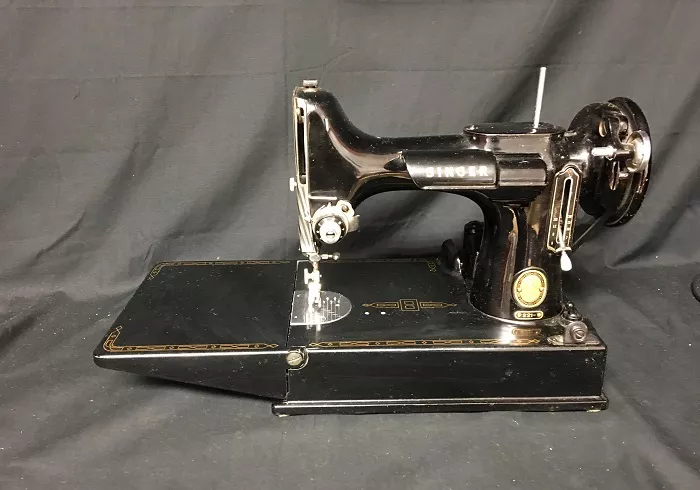LITITZ, Pa. — In an era dominated by computerized sewing machines, Myrna Eitzen remains loyal to her Singer Featherweight, a compact model built in 1961. With its durable, all-metal construction, impeccable straight-stitch quality, and lightweight design, the Featherweight continues to serve as Eitzen’s go-to machine for quilting and craft projects.
First introduced at the 1933 Chicago World’s Fair, the Singer Featherweight was promoted as a portable sewing solution for homemakers. Production ceased in 1964, but the machine’s popularity has never waned. Featherweights are now considered collector’s items and prized tools for dedicated quilters around the world.
Eitzen first encountered the machine while living in Minnesota in the early 1990s. Members of her quilt guild frequently brought their Featherweights to meetings, catching her attention with their petite frames and vintage charm.
“I thought, how handy, and they’re so cute, too,” she recalled.
She soon acquired her own for about $200, adding to her collection that began with a Singer Touch-and-Sew she bought from Iowa Mennonite School for $20.
Featherweights are known for producing tight, precise straight stitches—an essential feature for quilters. While the machine includes accessories for alternative stitch styles, many users, including Eitzen, rely solely on the standard presser foot and the straight stitch.
“There is a zig zag, but it doesn’t move the needle back and forth—it moves your fabric. I’ve never used it,” she said. Instead, she finishes fabric edges with pinking shears or folds and stitches them.
Featherweight machines are composed entirely of cast aluminum, with no plastic components, making maintenance straightforward. Replacement parts remain widely available, and technicians at local shops like Hinkletown Sewing Machine Shop are familiar with the model.
Portability is another beloved feature. Weighing just 11 pounds, the machine fits into a lockable carrying case, making it ideal for travel or group sewing sessions. Some users even bring their machines along in RVs for on-the-go stitching. Eitzen jokes about the lock, noting, “You could probably open it with a hair pin.”
Eitzen shares her enthusiasm for the machine with family. She helped her younger sister and daughters acquire their own Featherweights. When her daughters visit from out of state, the trio gathers around a table for shared sewing sessions.
Her passion for quilting extended into community involvement. For years, she was active in a quilt group formed through her church, East Chestnut Street Mennonite Church, where members met monthly to work on individual and charitable projects. One memorable initiative involved a yearlong exchange of 4-inch “charm” blocks that culminated in personalized friendship quilts. The group disbanded in 2020.
Eitzen also participated in her church’s sewing circle, a common tradition in Mennonite congregations. Volunteers sewed pillowcases for local shelters, drawstring bags for Mennonite Central Committee relief kits, and baby quilts for church families. Featherweights often accompanied members to the church basement where the circle met.
“Some of us would be cutting and ironing, some of us were sewing,” Eitzen said. “There were a bunch of people who did that.”
Although the pandemic led to the circle’s dissolution, Eitzen hopes to revive it and introduce younger generations to sewing.
She currently owns three Featherweights and still keeps her larger original Singer machine for occasional heavy-duty tasks, such as comforter repair. Most of her quilt-making—especially for her children, nieces, and nephews—is done on her Featherweights. As the number of babies in the family grew, she transitioned from hand quilting to using long-arm machine services for crib quilts.
These days, Eitzen makes two to three crib quilts a year, in addition to smaller projects like pillowcases, bags, and doll clothes. Some of her favorite quilts remain in her home, draped over furniture or displayed on walls.
Despite the growing sophistication of modern machines, Eitzen sees no reason to upgrade.
“If I had to buy a new machine, I don’t know what I would do,” she said. “They’re so computerized. I would have to learn so much. And I have never said, ‘I would like to sew so-and-so but I can’t because my machine wouldn’t do that.’ Whatever I want to do, I can do on my Featherweight.”

